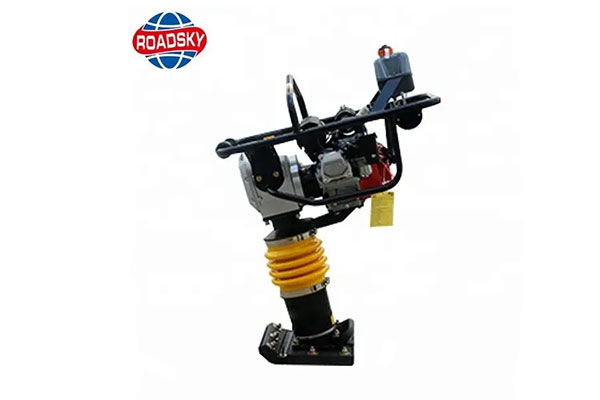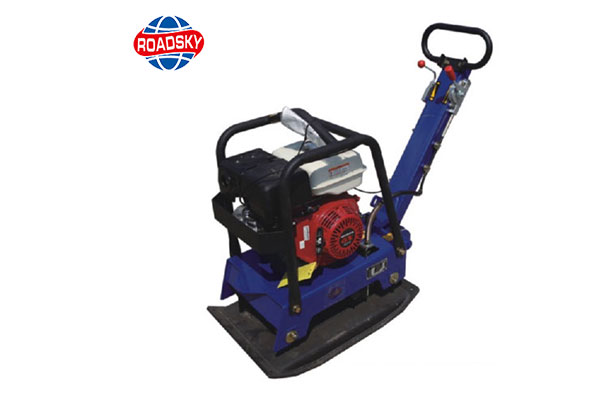Jumping Jack vs. Plate Compactor: What’s the Difference?
When it comes to construction and landscaping projects, having the right equipment can make all the difference in the world. Two commonly used pieces of equipment in these industries are the jumping jack and the plate compactor. While both serve the same basic purpose of compacting soil and other materials, they have distinct differences in terms of design, functionality, and application. In this article, we will explore the characteristics of both the jumping jack and plate compactor to help you understand which one is best suited for your specific needs.
Jumping Jack Compactor
The jumping jack compactor, also known as a “rammer,” is a compact and versatile piece of equipment designed for soil compaction. It is typically used in areas with limited access or confined spaces, making it an excellent choice for small construction and landscaping projects.

Here are some key features and characteristics of jumping jack compactors:
1. Design and Operation
- Vertical Action: Jumping jack compactors operate with a vertical pounding motion. They have a foot or plate at the bottom that jumps up and down rapidly, exerting pressure on the soil beneath it.
- Single Operator: These compactors are usually operated by a single person who guides the machine over the target area. The operator walks behind the machine to control its movement.
- Handlebars: Jumping jack compactors come equipped with handlebars for easy maneuverability and control. The operator can steer the machine and change its direction as needed.
2. Application
- Tight Spaces: One of the primary advantages of jumping jack compactors is their ability to work in tight or confined spaces. Their compact design allows them to reach areas that may be inaccessible to larger equipment.
- Ideal for Trenches: Jumping jack compactors are commonly used for compacting soil in trenches, around utility lines, and in areas with limited clearance.
- Suitable for Cohesive Soils: They are particularly effective in compacting cohesive soils like clay, where the vertical pounding action helps break up air pockets and increase soil density.
3. Limitations
- Limited Coverage: Jumping jack compactors have a relatively small footprint, which means they cover a smaller area with each pass. This can make them less efficient for larger projects.
- Less Efficient on Granular Soils: While they excel in cohesive soils, jumping jack compactors may not be as effective on granular soils like sand and gravel.
- Vibration and Operator Fatigue: The vertical pounding motion can transmit more vibration to the operator, potentially leading to fatigue and discomfort during prolonged use.
Plate Compactor
Plate compactors, also known as “vibratory plate compactors,” are another popular choice for soil compaction. They have a different design and operate in a distinct manner compared to jumping jack compactors.

Here are the key features and characteristics of plate compactors:
1. Design and Operation
- Horizontal Vibration: Plate compactors work by generating horizontal vibrations. The baseplate, which is flat and wide, vibrates rapidly in a forward and backward motion.
- Forward Travel: Unlike jumping jack compactors, plate compactors are self-propelled. They move forward with each pass, reducing the physical effort required by the operator.
- Handle Controls: Plate compactors feature handle controls for steering and adjusting the machine’s direction. Operators stand behind the machine and guide it as it moves forward.
2. Application
- Wide Coverage: Plate compactors have a larger baseplate that covers more ground with each pass. This makes them highly efficient for larger areas and projects.
- Effective on Granular Soils: Plate compactors are well-suited for compacting granular soils such as sand, gravel, and crushed stone. The horizontal vibration helps settle the particles and eliminate voids.
- Versatile: They can be used for a wide range of applications, including driveways, walkways, patios, and larger construction projects.
3. Limitations
- Limited Access: Due to their larger size and horizontal motion, plate compactors may not be suitable for tight or confined spaces.
- Heavier: Plate compactors tend to be heavier than jumping jack compactors, which can make them more challenging to transport and maneuver.
- Less Effective on Cohesive Soils: While plate compactors can still be used on cohesive soils, they may not be as efficient as jumping jack compactors for this type of soil.
Choosing the Right Compactor
The choice between a jumping jack compactor and a plate compactor largely depends on the specific requirements of your project. Here are some factors to consider when making your decision:
1. Project Size
- Small Projects: For small landscaping or trenching projects with limited space, a jumping jack compactor may be the better choice due to its compact design and maneuverability.
- Large Projects: If you are working on larger areas or projects like driveways and parking lots, a plate compactor is more efficient and will save you time and effort.
2. Soil Type
- Cohesive Soils: If you are dealing with clay or other cohesive soils, a jumping jack compactor’s vertical action can provide better compaction results.
- Granular Soils: Plate compactors are the go-to choice for granular soils like sand and gravel.
3. Accessibility
- Tight Spaces: If your project involves tight or hard-to-reach areas, a jumping jack compactor’s small size and vertical motion will be advantageous.
- Open Areas: In open areas where maneuverability is not an issue, a plate compactor’s efficiency and speed make it a more suitable option.
4. Operator Comfort
Consider the comfort and fatigue level of the operator. The vertical motion of a jumping jack compactor can be more physically demanding on the operator than the horizontal motion of a plate compactor.
Conclusion
In the showdown between the jumping jack compactor and the plate compactor, both machines have their strengths and weaknesses. The choice ultimately depends on the specific demands of your project. Jumping jack compactors are ideal for small, confined spaces and cohesive soils, while plate compactors excel in larger areas with granular soils. By understanding the differences between these two types of compactors, you can make an informed decision that ensures the success of your construction or landscaping project.
RoadSky and Jumping Jack Compactor, Plate Compactor
RoadSky is a road maintenance machinery supplier from China, with 20+ years of experience, professional team guidance, and high-quality after-sales, if you are looking for a Jumping Jack Compactor or Plate Compactor for your project, you can contact us for more information.

